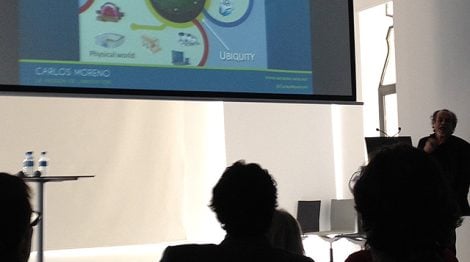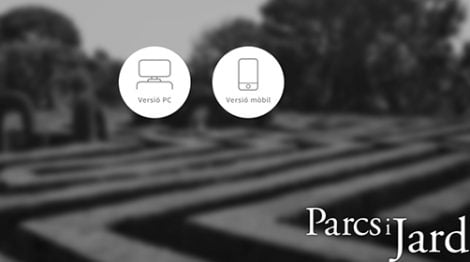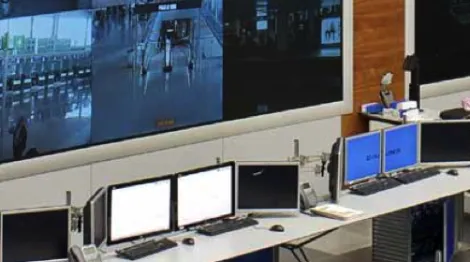The Smart City: from the factory to the city
What is a Smart City? –you say as you sink your blue sensor into my sensor. What is a Smart City? And you ask me? Smart City… is you. The concept of Smart City is something very new to the...

What is a Smart City?
–you say as you sink your blue sensor into my sensor.
What is a Smart City?
And you ask me? Smart City… is you.

The concept of Smart City is something very new to the citizen. In fact, most may not know the term or what is behind it. Unfortunately, the social and economic situation forces us to think about more day-to-day things. But we must not forget that it is they, the citizens, who really need to know the meaning of Smart City. They are the most important thing and the reason why we work so enthusiastically in the intelligent city environment. That is why I think we should make an effort to clearly and practically convey the meaning of Smart City, to convey the benefits that this paradigm entails, and to clarify the inherent fears fueled by such popular dystopian literature.
The past future and the Smart City
If we take a look at the most common representations of cities of the future, we find mostly examples that are not entirely identifiable. And I say “cities of the future” because that is the idea that is generally held when talking about Smart Cities. You only have to look at the images that usually accompany headlines that talk about intelligent cities. Images of gigantic futuristic cities, illuminated like the Enterprise’s dashboard, communicated with roads extracted from the Jetsons and plagued with structures worthy of Superman’s home planet.
Nor are the stories that have been created about the framework of these cities of the future very flattering:
- Blade Runner (Do Androids Dream of Electric Sheep?, by Philip K. Dick) presents a socially decadent and dirty city, devastated by pollution and saturated by a technology that has been imposed on the citizen.
- Metropolis, an animated film based on the Japanese comic by master Osamu Tezuka (something like the oriental Walt Disney) and directed by Rintaro. The work is loosely based on the other masterpiece that everyone knows by Fritz Lang. It presents a futuristic city that physically divides citizens into watertight strata, where robots take care of the manual work that human beings used to do, but without solving the problem of the unemployment of those same citizens, thus creating serious problems of unemployment, poverty and violence. At the same time, the plot talks about Tima, a robot with the appearance of a girl endowed with advanced artificial intelligence, capable of controlling the big data of the entire planet in favor of a single person to control the other cities.
As you can see, these are only two examples (excellent ones, yes) of film dystopias that present a strongly conditioning future on the idea of Smart City. But if we stop for a moment, we see that the problems they talk about are problems that have occurred, occur and unfortunately will occur regardless of technology and the passage of time. Fortunately, they present them to us exaggerated, but they are problems inherent to the human being and to the complexity of social relations in a living fabric such as the city.
These are not examples of Smart City. Coincidentally they are examples of the opposite of a Smart City. It is fascinating how an idea so radically opposed to the intelligent city can become the idea that can generally be had about the technology applied to the management of the city.
What then is the Smart City?
We understand the Smart City as a logical continuation of the city we already know. If you look out the window of your apartment, you are surely already contemplating a Smart City. Or a part of it. From that window you may see the power lines, some public garden, a garbage container, several traffic lights, manhole covers, a decorative fountain, bicycles, cars, the bus stop… all these elements can be managed through Smart paradigms. This is nothing more than managing all these resources in real time and therefore, doing it in a much more efficient way. Through a system of sensors we will be able to know if the container is full when the garbage truck passes and thus optimize its route, you will be able to know at what exact time the bus passes through your stop before leaving home, the gardens will be watered just at the right time and with the exact amount of water, the city council’s maintenance team will know at all times which streetlights have problems and will better manage their work, outputs and materials, water leaks in the sewers can be controlled with precision… and also do everything from the same control point in real time. All this translates into greater savings for the city and an improvement in services to the citizen.
To enhance this efficiency with the minimum resources, things must communicate with each other and with us. This is how we will obtain maximum performance and reduce costs. This has come to be called “the internet of things”. It is very possible that in your house you have wireless internet (wifi) and that you can sit in front of the computer and surf the net, or lie down comfortably while you browse the newspaper on the tablet and watch the television, many of them already with wifi connection, without forgetting the ubiquitous smartphone. All these are things that are connected to each other and to the network, through the router that the telephone company has installed for you. Each of those connected things has its own identifier that is different from that of the other gadgets. Transfer this system from your home to the entire city and you will have “the internet of things”. There are a lot of new terms that are nothing more than the translation to the city of the technology that we already know or a new philosophy of use of that same technology:
- Urban mobility
- Water management
- Waste collection and management
- Energy efficiency
- Citizen services
- Open data
- Big Data
- The Internet of Things
The abuse of this terminology can alienate the citizen from a reality that already exists. Or what is worse, cause a chronic rejection of the Smart City that is very costly to correct.
From the Factory to the City
The factory and the city are two concepts that are very linked. Apparently they can be continents of exclusive forms of management, but it may only be a matter of proportions.
Traditionally, the factory has always been treated as an entity in which the first thing to take into account is profitability in any of its forms. Subsequently, thanks to the advance of Psychology and society, human team management parameters have been introduced that have gradually given greater weight to the human side of the factory.
In the case of the city, it is possible that the opposite has occurred. Saving political issues or specific historical cases, the city has always been studied from a point of view of human relations. But gradually technological systems are being introduced that have already been successful in industry and that are turning the city into a much more efficient system. Seeing the city as a factory is not the right thing to do, just as seeing the factory as an inhuman gear of profitability (…the new experience shows that the more human the industry becomes, the more profitable it is).

But not seeing the city as a system in which the technological advances of industry can make it more efficient and more comfortable for the citizen is denying an unstoppable reality. We already have the technology, we just have to use it in the city as we do in industry. That is what we call Smart City. But an intelligent city is not “intelligent” solely because of this transfer of technologies. A city is intelligent when that technology is also used to make the citizen more involved in the management of the city, as if it were a living sensor, with its Smartphone as the key to that city.
Transparency in citizen participation management
This is where the real challenge of Smart Cities lies. Now that we have the technology, the most complex part remains. We know that the city is a place where thousands of people live together. It is our duty to improve the quality of life of citizens and involve them in the construction of their living environment. Political managers are already realizing that facilitating citizen participation is profitable in all its aspects, which is why a multitude of events and meetings are created to exchange opinions and Smart experiences based on pilot projects and already very advanced plans, such as the example of Santander, a very exciting Smart City paradigm or the city of Barcelona or Málaga.
We, as engineers, already have the experience and the technological vision, but we must reinforce the social vision to create comprehensive projects that are of real help and guidance to the city councils that are determined to enter the Smart City model.
Congratulations. You already live in the Smart City.







